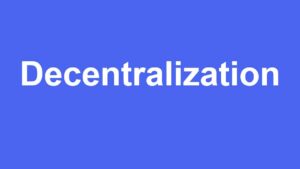Coupon rate: Meaning, examples and how it works

What are coupon rates?
The nominal yield on a fixed-income instrument is referred to as its coupon rate. In the case of bonds, the issuer’s yearly coupon payments are a percentage of the bond’s par value. The interest paid on a bond is expressed as a percentage of its face value and is referred to as the coupon rate. Interest rate refers to the rate at which bond issuers pay investors regularly. Bond coupons are determined by the bond’s par value (face value), not the issuance price or market value. Regardless of what happens on the bond price in the market, if you own a 10-year, ₦2 million bond with a 10% coupon rate, you will receive ₦200,000 annually for 10 years.
Examples of coupon rates
Bonds are a common way for governments and businesses to raise much-needed funds. Bond buyers are promised interest payments at regular intervals (annually or semiannually) on their principal at the coupon rate specified in the bond certificate.
The bond issuer makes interest payments each year until Maturity, at which point they repay the bond’s principal (or face value). A coupon rate is not the same as an interest rate. The distinction is best shown with an example. Suppose you invested ₦1 million in a bond with a 10% coupon rate. An interest rate of 10% is an annual payout of ₦100,000.
If you purchase a bond for more than its face value, say ₦2 million, you would still receive a 10% coupon based on the ₦1 million face value. The result is that you will still receive ₦100,000. However, the current interest rate is just 5% because you purchased the bond for ₦2 million. Similarly, if you purchased the bond for less than ₦500,000 (in this case, below its face value), you would still receive ₦100,000 annually, but the interest rate would be 20%.
How coupon rates work
On the date of issuance, the coupon rate or coupon payment is the declared nominal yield of the bond. To calculate the yield to Maturity of a bond, multiply its current yield by the bond’s market price.
Bond coupon rates are determined by dividing the total payment during the bond’s life by the bond’s par value each year. A coupon rate of 5% applies to a bond with a ₦1000,000 face value that pays a ₦25,000 coupon semiannually. Investors prefer bonds with greater coupon rates over those with lower coupon rates if all other factors are equal. The interest rate paid on a bond by its issuer is the coupon rate. The original meaning of the word “coupon” comes from when actual coupons were used to collect interest regularly. The coupon rate on a bond is established at the time of issue, and bondholders will continue to receive interest payments at the same time each year.
A bond’s coupon rate is set at the time of issuance, with consideration given to several factors, including current market interest rates. The bond price rises or falls based on how much the market interest rate deviates from its coupon rate. The performance of bond investments is sensitive to movements in the market interest rate. As a bond’s coupon rate remains constant until its Maturity, the bondholder is stuck with receiving interest payments below the market rate even when that rate is greater. The other option is to sell the bond at a loss, which is just as bad. In this way, bonds with higher coupon rates offer protection from the market’s risk of interest rate increases. Having a bond that pays a greater coupon rate than the market rate might be useful if the market rate drops
Investors who purchase bonds at face value at issue and hold them to Maturity are rewarded with interest at the coupon rate established at the time of issuance. Investors purchasing the bond on the secondary market may receive a return greater than or less than the bond’s coupon rate, depending on the prices they pay. Yield to Maturity is the effective rate of return.
If you buy a bond trading for ₦90,000 instead of ₦100,000, you will earn more interest over the whole term than you would by investing in bonds paying the coupon rate. On the other hand, if a bond is purchased at ₦110,000 instead of ₦100,000, the buyer will receive a smaller yield to Maturity than the coupon rate.
What is the variation between Coupon Rate and YTM?
The yearly yield, or coupon rate, is the amount of money a bondholder may anticipate receiving from the issuer each year. It is determined at the time of issuance by dividing the total of the bond’s yearly coupon payments by the bond’s face value. At the moment of purchase, the yield to Maturity and coupon rate of a bond is the same.
A bond’s yield to Maturity (YTM) is the annualized rate of return for the investment over its entire lifespan, from purchase to its final maturity date. Depending on the bond’s current market price and the number of payments still to be made, this is the total amount that can be expected to be paid out in coupon payments.
Quantifying the Realized Productivity Gain
When a bondholder reinvests coupon payments at the same rate as the bond, the resulting return is the effective yield. The term “real yield” refers to the actual return on investment rather than the “nominal yield,” which is the coupon rate. Effective yield, in contrast to nominal yield, factors in the multiplicative effect of compounding on investment returns.
Conclusion
The term “coupon rate” comes from the days before computerized investment, when paper coupons were included with each bond. These were exchanged monthly for interest payments due to the bond issuer. So the rate of return on these notes was known as the coupon rate.
Bond prices are strongly affected by the coupon rate’s relationship to current market interest rates. The price of a bond goes up if its coupon is higher than the current interest rate and down if it’s lower.
A bond’s coupon rate is set at the time of issuance, with consideration given to several factors, including current market interest rates. The bond price rises or falls based on how much the market interest rate deviates from its coupon rate. Because the coupon rate on a bond remains constant until its Maturity, higher coupon bonds can be used as a hedge against rising market interest rates.
Don't miss a thing. Follow us on Telegram and Follow us on WhatsApp. If you love videos then also Subscribe to our YouTube Channel. We are on Twitter as MakeMoneyDotNG.





